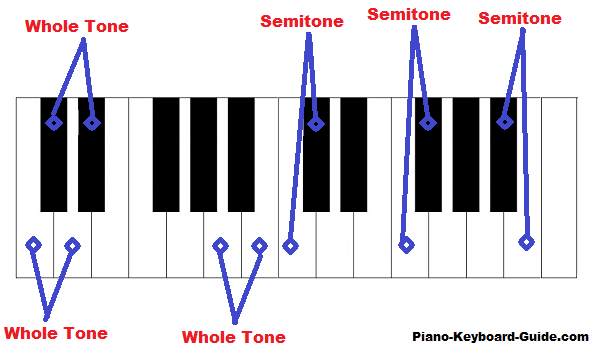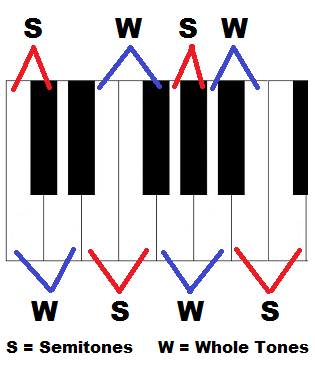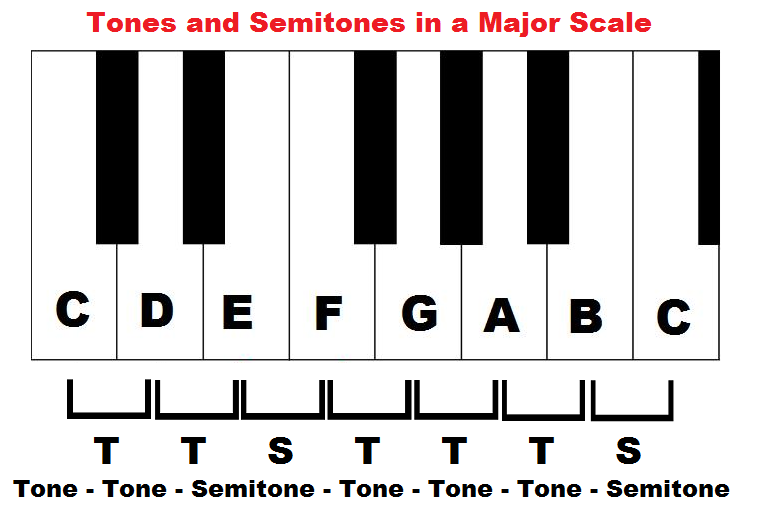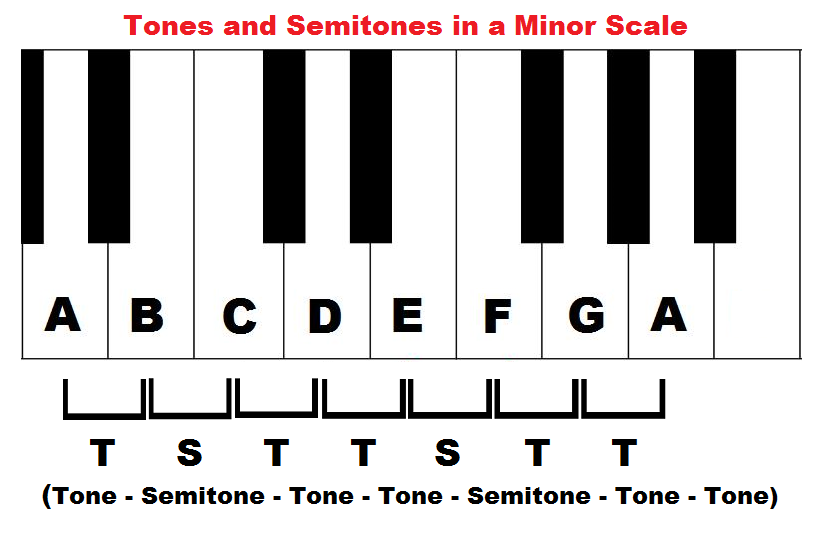In this lesson we will take a look at whole tones and semitones (as they are called in British English). In American English, they are called whole steps, and half steps or half tones, respectively.
A semitone (half step or half tone) is the smallest interval in Western music. It is the shortest distance between two keys on your piano. It can be from black to white, white to black or white to white key, for example C# to D, F# to G and B to C, respectively. As long as the key you’re playing is to the immediate right or immediate left of another, the distance is a semitone. 
Highly Recommended: Click here for one of the BEST piano/keyboard courses I’ve seen online.
Two semitones (two half steps/half tones) make up one whole tone (one whole step). Pick a key on your keyboard and move one half step to the right, then another half step to the right. There you have it: a distance of a whole tone. You can move two half steps to the left as well. Examples of whole tones are C to D, D to E, and B flat to C. A key is skipped every time.
A whole tone can be from white to black, black to black, black to white or white to white key. For example, B to C#, F# to G#, Bb to C and C to D, respectively. 
There are two types of semitones. They are chromatic and diatonic semitones. When a semitone contains two notes with the same letter name, it is chromatic. For examples, C to C# and D to D sharp are chromatic. When the two notes have different letter names, example, C to D flat and D to E flat, the semitone is diatonic.
Chromatic and diatonic semitones, such as C to C# and C to Db, respectively, sound the same. They are played with the same keys on your piano. Hence, C# and Db are enharmonic equivalents. The only difference is that they have different note names. C# is a chromatic semitone higher than C and Db is a diatonic semitone higher than C.
Tones and Semitones in a Major Scale
A major scale is formed with the formula W-W-H-W-W-W-H. This stands for whole step, whole step, half step, whole step, whole step, whole step half step. As we’ve seen, the half steps are the semitones and the whole steps are the whole tones. There are 2 semitones and 5 whole steps. 
Tones and Semitones in a Minor Scale
A minor scale follows the pattern, W-H-W-W-H-W-W. Like the major scale, there are 2 semitones and 5 whole steps.
List of Tones and Semitones (Whole Steps and Half Steps)
There are 12 semitones in an octave.
List of Semitones (Half Steps)
- C to C#/Db (C# and Db are played with the same key on your piano)
- C#/Db to D
- D to D#/Eb
- D#/Eb to E
- E to F
- F to F#/Gb
- F#/Gb to G
- G to G#/Ab
- G#/Ab to A
- A to A#/Bb
- A#/Bb to B
- B to C
List of Whole Tones (Whole Steps)
- C to D
- C#/Db to D#-Eb
- D to E
- D#/Eb to F
- E to F#/Gb
- F to G
- F#/Gb to G#/Ab
- G to A
- G#/Ab to A#/Bb
- A to B
- A#/Bb to C
- B to C#/Db